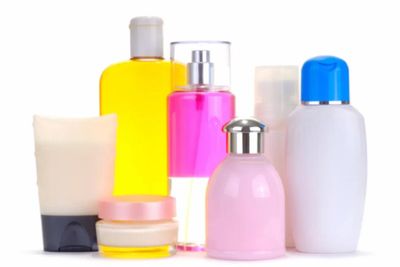A friend and I had lunch yesterday and she pointed out that she never knows what ingredients to look for and to avoid when she chooses beauty products. I've been investigating this for a couple years now, trying to hone in on the best and worst ingredients out there. I couldn't name every terrible and beneficial concoction; however, I do have a short list of ingredients to look for and to avoid that I thought I'd share.
The Good Stuff:
1. Hyaluronic acid
This is a fabulous, skin-smoothing and plumping ingredient. Look for it in serums and antiaging creams. Your body produces this substance naturally, but over time that production slows. Supplementing your skin with more hyaluronic acid helps to defy those wrinkles and fine lines.
2. Vitamin C
Hyaluronic acid becomes even more effective when combined with another natural age fighter—vitamin C. This well-known antioxidant increases skin's strength and elasticity.
3. Green tea extract
This ingredient contains polyphenols, which fight free radicals and sun damage. It is also an anti-inflammatory and may help prevent skin from sagging.
4. Caffeine
If you suffer from dark under-eye circles, caffeine may help lighten things up. It shrinks veins and delivers a quick fix (though not permanent) by reducing redness and discoloration.
5. Salicylic acid
This is a popular acne-fighting ingredient. It is less irritating than other acne treatments and also exfoliates skin.
6. Argan
Argan is often found in the United States in the form of argan oil. It is a fantastic hydrator and a natural wrinkle fighter. It really is a hero ingredient with a pile of benefits. In addition to fighting aging, it is an anti-inflammatory and an acne fighter.
The Bad Guys:
1. Sodium lauryl or laureth sulfate
If I pick up a product and this ingredient is listed, I put the jar down right away. Often used to make skin-care products (especially cleansers) bubble or foam, this ingredient is a known skin irritant. In the auto industry, it's used as an engine degreaser … enough said. Companies know that this ingredient has the potential to cause redness, irritation and dryness, but they use it because of the consumer demand for products that we can "see" working—lots of foam. Avoid this.
2. Petroleum by-products
This one was hard for me because I have been using Vaseline for years. But, petroleum jelly and mineral oil are by-products of petroleum, and, despite the fact that they give skin the feeling of being moisturized, they actually interfere with your body's natural moisture production. Overuse of these items can cause chapping, which in turn makes you use more (sound familiar, lip balm users?). It's a bad cycle for your skin.
3. Parabens
There has been a widespread effort by cosmetics companies to get rid of parabens—and for good reason. Parabens are used as preservatives and to inhibit bacteria growth in products. However, they are also known allergens that can cause dermatitis. They also interfere with hormone and estrogen levels in the body. Some products list as many as five parabens in one product. Always look for paraben-free cosmetics!
This is only the tip of the ingredient iceberg. I always recommend that women do some solid research before overhauling their skin-care routine. And, when you try new products, pay attention to what is in them and how your skin reacts.
You may also want to read:
5 Tools for a Flawless Face Every Day
5 Tips to Liven Up a Tired Face
10 Beauty Products That Make Life Easier
Are You Using the Right Cleanser?
Beauty Lessons From French Women
Healthy Skin Dos and Don'ts
5 Totally Normal Habits That Are Making You Break Out
Bethany Porter is a blogger and beauty junkie. She believes in healthy living and that women have powerful potential for beauty both inside and out.
- 10 Baby Products That Adults Can Use ›
- Skin Lightening Creams Are Dangerous — And Harm Women ›
- 8 DIY and Natural Skincare Solutions for Better Self-Care ›


